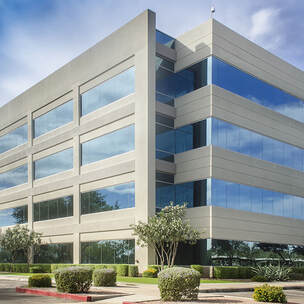 Commercial roofing experts can help build value Charlotte’s top commercial roofing experts can help maintain and improve your property’s value. When it comes to commercial real estate, maintaining and improving the value of your property is essential. A crucial aspect of any commercial building is its roof, and the question of whether investing in a new roof can increase the value of your property is an important one. In this article, we will explore the various factors that influence the value of a commercial building and how a new roof can be a valuable asset. The Importance of a Solid Roof A commercial building's roof is more than just a protective covering; it plays a significant role in determining the overall condition and longevity of the structure. A well-maintained roof can prevent water leaks, structural damage, and other issues that can degrade the value of a property. When prospective buyers or tenants assess a commercial building, the condition of the roof is often a critical factor in their decision-making process. Enhanced Aesthetics One immediate benefit of a new roof is the aesthetic improvement it can bring to a commercial property. A fresh, well-designed roof can give the building a modern and attractive appearance. This curb appeal can be a major draw for potential tenants or buyers, and it can make your property stand out in a competitive market. Energy Efficiency Upgrading to a new roof also presents an opportunity to incorporate energy-efficient materials and technologies. Cool roofs, for example, are designed to reflect more sunlight and absorb less heat, resulting in lower energy bills. The reduced energy consumption not only benefits your bottom line but also makes the property more attractive to environmentally-conscious businesses. Maintenance and Repair Costs An aging roof often requires frequent repairs and maintenance. These ongoing expenses can add up significantly over time and affect the property's overall profitability. Investing in a new roof can reduce these maintenance costs and make the property more financially appealing to potential buyers or tenants. Long-Term Value Commercial property investors often take a long-term view of their investments. A new roof not only improves the property's immediate value but also contributes to its long-term sustainability. A well-constructed roof can last for decades, providing peace of mind to both property owners and those interested in acquiring the building. Marketability In a competitive real estate market, properties with new roofs have a clear advantage. They are easier to market and attract a wider range of potential tenants or buyers. Additionally, having a new roof in good condition can expedite the sales or leasing process, saving you time and effort in the long run. Considerations for ROI While a new roof can undoubtedly enhance the value of your commercial building, it's essential to consider the return on investment (ROI). The cost of a new roof can vary significantly depending on the size of the building, the type of materials used, and other factors. Before making the investment, it's advisable to consult with a professional appraiser or a real estate expert to assess the potential increase in property value and how it compares to the cost of roof replacement. Improving Safety and Compliance Modern building codes and regulations often require specific safety standards for commercial properties, including the condition of the roof. Investing in a new roof ensures that your building complies with these standards, which is not only crucial for the safety of occupants but also for legal and insurance purposes. A compliant and safe structure can maintain its value and appeal to a broader range of potential tenants or buyers. Enhanced Insurability Insurance providers may view a well-maintained, new roof as a lower risk. This can result in reduced insurance premiums for your commercial property. By reducing operational costs, your property becomes more attractive to potential investors or lessees, further adding to its overall value. Tax Benefits In some regions, there are tax incentives and deductions available for commercial property owners who invest in energy-efficient roofing systems. These tax benefits can offset some of the costs associated with installing a new roof, making it a financially savvy decision. Choosing the Right Roofing Material The choice of roofing material is another factor that can influence the impact of a new roof on your commercial building's value. Different materials have various advantages and disadvantages. Here are a few options to consider:
The choice of roofing material should align with your long-term property goals, budget, and the specific needs of your commercial building. Professional Installation The installation of a new roof is a critical aspect of the process. To maximize the increase in your commercial building's value, it's essential to work with reputable roofing contractors. A professionally installed roof ensures that it not only looks good but also functions optimally. Additionally, warranties on materials and workmanship can provide added peace of mind to potential buyers or tenants. Regular Maintenance After investing in a new roof, it's vital to implement a regular maintenance schedule. Regular inspections and maintenance can prolong the life of the roof and ensure it continues to provide its benefits over the long term. Demonstrating a history of proper care can further enhance the value of your commercial property. In conclusion, a new roof can significantly increase the value of your commercial building by improving aesthetics, energy efficiency, safety, and insurability, among other factors. However, it's essential to make informed decisions about the type of roofing material, professional installation, and ongoing maintenance. With the right approach, a new roof can be a valuable asset that not only enhances your property's value but also attracts potential investors or lessees in a competitive real estate market. Hire Charlotte’s top commercial roofing experts Steele Restoration is a fully licensed and insured Charlotte NC and Greenville SC-based general contractor and roofing company specializing in roofing, siding, and storm damage restoration for single-family homes, multi-family complexes, and commercial and industrial sites. We service Charlotte and surrounding areas, including Rock Hill, Lake Norman, Steele Creek, Matthews, Ballantyne, and Blakeney, along with the Greenville and Spartanburg SC areas. 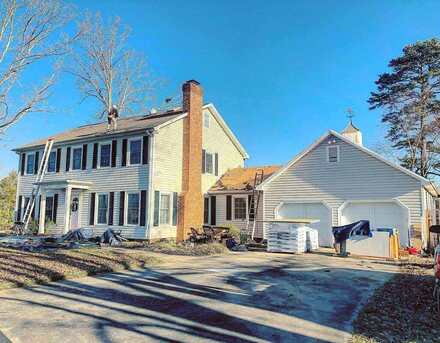 Residential roofing experts can help repair chimney issues Residential roofing experts in Charlotte NC can help inspect for chimney issues and repair them to protect them from leaks and damage. A well-maintained roof is crucial for the overall integrity of your home. While we often think about shingles, gutters, and flashing when considering roof maintenance, the area around your chimney can be a hidden source of trouble. Common issues that your roof can develop around your chimney can lead to leaks and costly repairs if not addressed promptly. In this article, we will explore these issues and provide you with practical solutions to prevent and resolve them. Issue 1: Leaking Flashing Flashing is the material used to seal the gap between your chimney and the roof. It prevents water from infiltrating the area. However, over time, flashing can deteriorate due to exposure to the elements, leading to leaks. Here's how to stop it: Solution: Inspect your flashing regularly for signs of wear and tear. If you notice any cracks, gaps, or missing sections, it's time to replace it. Hire a professional roofer to ensure proper installation. Issue 2: Damaged Chimney Crown The chimney crown is the top part of the chimney that protects it from the elements. If it's cracked or damaged, water can seep into your chimney and down into your home. Solution: Repair or replace the chimney crown if it's damaged. Regularly applying a water-resistant sealant can also prevent future issues. Issue 3: Cracked Mortar Joints The mortar between the bricks of your chimney can crack or erode over time, allowing water to enter. Solution: Inspect the mortar joints for any signs of damage and have them repaired by a professional mason. Regular maintenance and sealing can prolong the life of the mortar. Issue 4: Vegetation Growth Plants growing around your chimney can lead to various problems, including clogs in the chimney and damage to the structure. Solution: Regularly trim back any overhanging branches or vegetation near your chimney. Ensure that there is proper ventilation to prevent moss or algae growth on the chimney's surface. Issue 5: Improperly Installed or Damaged Chimney Cap A chimney cap is essential for preventing water, animals, and debris from entering your chimney. If it's improperly installed or damaged, it can lead to issues. Solution: Make sure your chimney cap is installed correctly and is in good condition. Replace or repair it as needed to keep your chimney protected. Issue 6: Water Stains on the Ceiling If you notice water stains on your ceiling near the chimney, it's a sign of a leak. This issue should be addressed promptly to prevent further damage. Solution: Contact a professional roofing contractor to identify the source of the leak and make necessary repairs. This might include fixing flashing, repairing the chimney, or replacing damaged roofing materials. Issue 7: Inadequate Ventilation Proper chimney ventilation is essential to prevent moisture buildup. Inadequate ventilation can lead to condensation, which can cause various issues, including rust on the chimney liner. Solution: Ensure your chimney is properly ventilated to allow for adequate airflow. This can often be achieved by consulting with a chimney professional and making necessary modifications. Issue 8: Animal IntrusionAnimals, such as birds or squirrels, might choose your chimney as a cozy nesting spot. Their presence can lead to blockages and potential damage to your chimney and roof. Solution: Install a chimney cap with wire mesh to keep animals out while allowing proper ventilation. If you suspect animals have already entered your chimney, contact a wildlife removal expert to safely and humanely remove them. Issue 9: Chimney Movement Over time, your chimney might experience slight settling or movement. This can lead to gaps between the chimney and the roof, creating entry points for water. Solution: Regularly inspect your chimney for signs of movement. If you notice any gaps or separations, consult with a professional mason to stabilize and reseal the chimney. Issue 10: Corroded Flashing Flashing is typically made of metal, and over time, it can corrode due to exposure to the elements, especially in areas with high humidity or salt exposure. Solution: Regularly inspect your flashing for signs of corrosion. If corrosion is significant, it's essential to replace the flashing with a new, corrosion-resistant material to maintain a watertight seal. Issue 11: Poorly Installed or Damaged Counter Flashing Counter flashing is another layer of protection that's applied over the top of the base flashing to enhance waterproofing. If it's improperly installed or damaged, it can lead to leaks. Solution: Ensure that counter flashing is correctly installed, covers the base flashing securely, and is in good condition. Any damaged counter flashing should be repaired or replaced as needed. Issue 12: Cracked or Deteriorating Bricks The bricks around your chimney can deteriorate due to exposure to the elements, especially in regions with extreme weather conditions. Cracks or crumbling bricks can allow moisture to infiltrate your chimney structure. Solution: Regularly inspect the condition of the bricks and mortar around your chimney. Replace any damaged bricks and repoint the mortar to maintain the chimney's structural integrity and prevent water penetration. In summary, the area around your chimney can be a vulnerable point for potential roof issues. By addressing these common problems and implementing the suggested solutions, you can protect your home from water damage and structural issues. Regular inspections and maintenance are key to preserving the longevity and performance of your roof and chimney. If you're uncertain about the condition of your chimney or are experiencing any issues, it's always best to consult with experienced professionals who can provide the necessary repairs and improvements to keep your home safe and dry. Hire the best residential roofing experts in Charlotte NC Steele Restoration is a fully licensed and insured Charlotte NC and Greenville SC-based general contractor and roofing company specializing in roofing, siding, and storm damage restoration for single-family homes, multi-family complexes, and commercial and industrial sites. We service Charlotte and surrounding areas, including Rock Hill, Lake Norman, Steele Creek, Matthews, Ballantyne, and Blakeney, along with Greenville and Spartanburg SC areas. 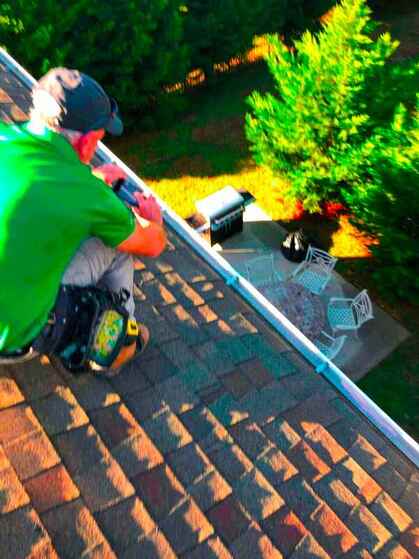 Roofer can help you prevent birds from nesting on your roof Charlotte’s best roofer can help you prevent birds from nesting on your roof. Birds are fascinating creatures that bring joy with their chirping and vibrant colors. However, when they decide to set up their homes on your roof, it can lead to a range of issues. In this article, we will explore the common reasons why birds choose your roof, the effects of their presence, and how you can prevent them from nesting there. Common Reasons Birds Nest in Roofs
Effects of Birds Nesting in Your Roof While birds nesting on your roof may seem harmless at first, their presence can lead to various issues: Structural Damage: Birds nesting on your roof can lead to significant structural damage over time. This damage occurs in several ways:
Noise Disturbances: Birds, particularly during their nesting and feeding periods, can create significant noise disturbances. The constant chirping, squawking, and flapping of wings can be disruptive to your peace and quiet. This can be especially problematic if you have young children, work from home, or simply value a tranquil living environment.
Proper handling and disposal of bird droppings are essential to minimize these health risks. Individuals with compromised immune systems or respiratory conditions are particularly vulnerable.
Preventing Birds from Nesting in Your RoofPreventing birds from nesting on your roof is essential to avoid the problems associated with their presence:
While birds are beautiful creatures, their presence on your roof can lead to various problems. Understanding why they choose your roof, being aware of the effects, and taking proactive steps to prevent them from nesting can help maintain a peaceful and structurally sound home. By implementing these preventive measures, you can enjoy the beauty of birds without the drawbacks of them nesting on your roof. Professional Assistance If your bird infestation problem is severe or persistent, it's advisable to seek professional assistance. Pest control experts or wildlife removal specialists can assess the situation and implement effective measures to safely relocate the birds and prevent their return. Legal Considerations Before taking any measures to deter or remove birds from your property, it's important to be aware of local and national wildlife protection laws. Certain bird species are protected by law, and interfering with their nests or harming them can result in legal consequences. Consult with local authorities or wildlife agencies to ensure you're following regulations when addressing a bird infestation issue. Humane Solutions Whenever possible, opt for humane solutions to discourage birds from nesting on your roof. This can include using non-lethal bird deterrents and ensuring that no harm comes to the birds during removal or relocation. Humane methods not only protect the birds but also promote a more ethical and environmentally responsible approach to dealing with wildlife conflicts. Regular Maintenance Preventing birds from nesting on your roof is an ongoing process. Regular maintenance of your property, including inspecting the roof, clearing debris, and sealing potential entry points, is essential to ensure that birds don't return. Consistent efforts can help maintain a bird-free environment around your home. Dealing with birds nesting on your roof requires a combination of understanding their behavior, taking proactive measures, and, when necessary, seeking professional help. By addressing the issue promptly and using humane methods, you can protect your home from structural damage, noise disturbances, and health risks while respecting the natural behavior of these fascinating creatures. Remember to stay informed about local wildlife regulations to ensure that your actions are both effective and lawful in dealing with bird infestations. Hire Charlotte’s best roofer Steele Restoration is a fully licensed and insured Charlotte NC and Greenville SC-based general contractor and roofing company specializing in roofing, siding, and storm damage restoration for single-family homes, multi-family complexes, and commercial and industrial sites. We service Charlotte and surrounding areas, including Rock Hill, Lake Norman, Steele Creek, Matthews, Ballantyne, and Blakeney, along with the Greenville and Spartanburg SC areas. 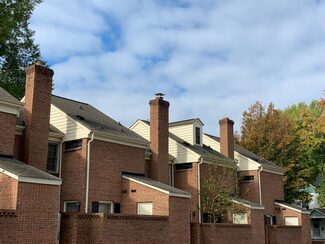 Roof repair experts can help you replace your roof slate Charlotte’s top roof repair experts can help you maintain a functional roof. Replacing a roof slate is a crucial task to maintain the integrity and longevity of your roof. A damaged or missing slate can lead to water leaks and structural issues if not addressed promptly. In this step-by-step guide, we will walk you through the process of replacing a roof slate, ensuring your roof remains in good condition. Tools and Materials You'll Need Before you begin, gather the following tools and materials:
Step 1: Safety First Safety should always be your top priority. Wear the necessary safety gear, including safety glasses and gloves. If you're working on a steep roof, use a safety harness to prevent falls. Place the ladder securely on a flat surface and make sure it's stable before climbing. Step 2: Identify the Damaged Slate Carefully inspect your roof to identify the damaged or missing slate. Look for cracked, chipped, or loose slates. Mark the damaged slate for replacement. Step 3: Remove Surrounding Slates To access the damaged slate, you may need to remove the slates around it. Use a slate ripper or pry bar to gently lift the slates above and to the sides of the damaged one. Be cautious not to damage adjacent slates. Step 4: Remove the Damaged Slate Once you have access, use the slate ripper to carefully loosen and remove the damaged slate. Be gentle to avoid breaking the surrounding slates. If the slate is nailed in place, use a hammer to remove the nails. Step 5: Prepare the Replacement Slate Measure the dimensions of the damaged slate you removed to ensure your replacement slate is the right size. If necessary, trim the replacement slate using a slate cutter or a circular saw with a masonry blade. Step 6: Install the Replacement Slate Slide the replacement slate into the empty space, making sure it fits snugly. If you removed surrounding slates, replace them as well, working from the bottom up. Step 7: Secure the Slate Secure the replacement slate in place using slate hooks or nails. Drive the nails through the pre-drilled holes near the top of the slate, or use hooks to hang the slate on the batten. Be careful not to overdrive the nails, as this can crack the slate. Step 8: Seal the Slate Apply roofing cement around the edges of the replacement slate to seal it and prevent water infiltration. Smooth the cement with a trowel for a neat finish. Step 9: Optional Roofing Felt If your roof has roofing felt, you can add a piece of felt under the replacement slate for extra protection against leaks. Cut the felt to size and place it under the slate before securing it in place. Step 10: Clean Up Remove any debris and nails from the roof to prevent potential damage or injury. Double-check your work to ensure everything is secure and properly sealed. Replacing a roof slate is a manageable DIY task if you have the right tools and follow these steps carefully. Regular roof maintenance, including slate replacement, is essential to keep your roof in top condition and protect your home from water damage. If you're not comfortable with heights or roof work, consider hiring a professional roofer to ensure the job is done safely and correctly. Additional Tips and Considerations Matching Slate: When purchasing replacement slates, try to match the color and style of your existing slates as closely as possible. This helps maintain the aesthetic appeal of your roof.
In conclusion, replacing a roof slate is a manageable task for homeowners who are comfortable with DIY projects and have the necessary tools and materials. However, it's essential to prioritize safety and take precautions to prevent accidents. If in doubt, consult a professional roofer to ensure the job is done correctly and to maintain the integrity of your roof. Regular maintenance and timely slate replacement will help extend the life of your roof and protect your home from potential water damage. Hire Charlotte’s top roof repair experts Steele Restoration is a fully licensed and insured Charlotte NC and Greenville SC-based general contractor and roofing company specializing in roofing, siding, and storm damage restoration for single-family homes, multi-family complexes, and commercial and industrial sites. We service Charlotte and surrounding areas, including Rock Hill, Lake Norman, Steele Creek, Matthews, Ballantyne, and Blakeney, along with the Greenville and Spartanburg SC areas. 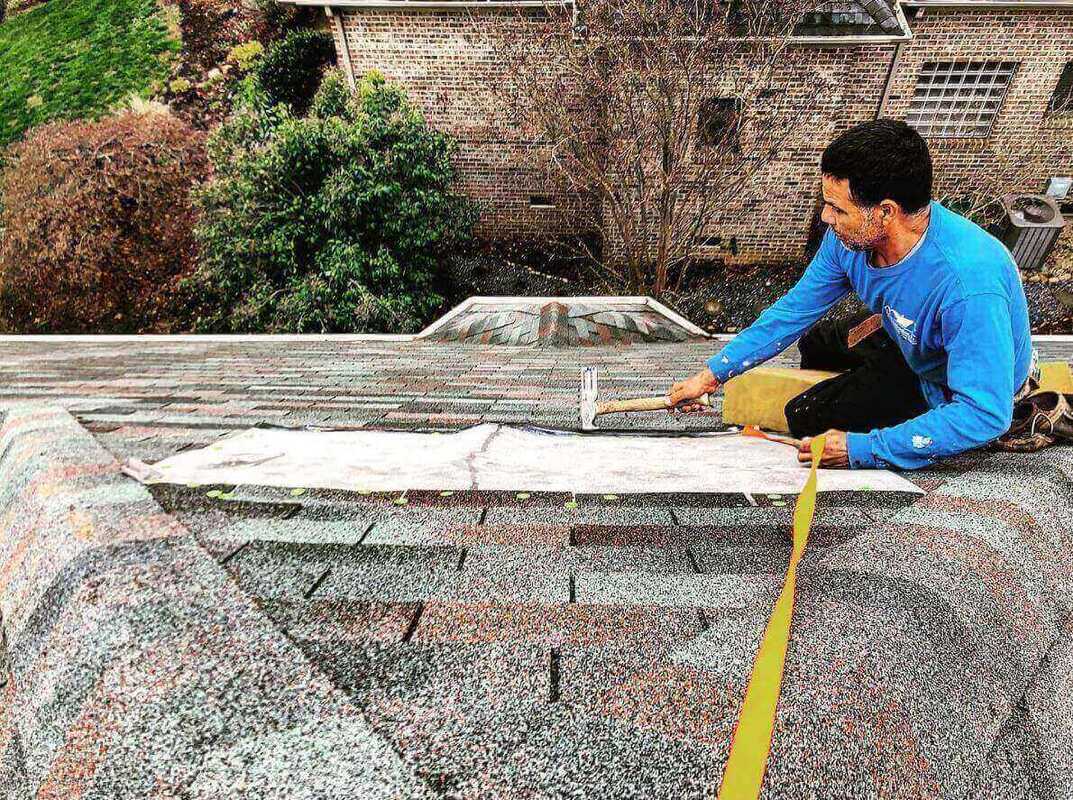 Property insurance claims and adjusters can help protect your investment Charlotte’s top property insurance claims and adjusters can help safeguard homeowners against perils that could otherwise lead to substantial financial losses. However, it's important to understand that not all situations are covered by your policy. Home insurance policies often come with exclusions, which are specific events or circumstances that are not covered. Understanding these exclusions and finding ways to mitigate their impact is essential for homeowners. In this article, we'll explore common home insurance exclusions and provide tips on how to navigate them effectively. Earthquake and Flood Damage: One of the most common exclusions in standard home insurance policies is damage caused by earthquakes and floods. If you live in an area prone to these natural disasters, it's essential to consider purchasing additional coverage. Earthquake insurance and flood insurance are typically offered as separate policies, and while they come at an extra cost, they provide valuable protection for your home and belongings. Maintenance-Related Issues: Home insurance is designed to cover sudden and unexpected events, not routine maintenance issues. Damage resulting from neglect or lack of maintenance, such as a leaky roof or a burst pipe that could have been prevented with regular upkeep, is usually not covered. To avoid this exclusion, make sure to maintain your home properly and address any issues promptly. Acts of War and Terrorism: Damage caused by acts of war or terrorism is often excluded from home insurance policies. While these events are relatively rare for most homeowners, it's important to be aware of this exclusion. In some cases, you may be able to purchase additional coverage for terrorism-related incidents, so check with your insurance provider for options. Home Business Liabilities: If you operate a home-based business, your home insurance policy might not cover business-related liabilities or losses. To ensure adequate protection, consider adding a home business endorsement to your policy or purchasing a separate business insurance policy. This will help safeguard your business assets and liabilities. Valuable Items and Jewelry: Most home insurance policies have limits on coverage for high-value items like jewelry, art, and collectibles. If you own valuable possessions that exceed these limits, consider scheduling them separately or purchasing a valuable items endorsement. This will ensure that your cherished items are adequately protected. Intentional Damage: Deliberate acts of destruction or damage to your own property are generally not covered by home insurance. This includes situations such as vandalism or intentionally setting fire to your home. These actions are illegal and will not be supported by your policy. Pets and Certain Dog Breeds: Liability coverage in home insurance may exclude certain dog breeds or specific animal-related incidents. If you have a dog, especially one considered high-risk by insurance companies, check your policy for any breed-specific exclusions. You may need to purchase a separate pet liability policy or seek coverage from a specialty insurer. Acts of Negligence: Home insurance is designed to protect against accidents and unexpected events. It typically does not cover damage resulting from negligence, such as leaving a faucet running and causing a flood. Homeowners should exercise caution and take measures to prevent such incidents. Home Businesses: If you operate a business out of your home, your standard home insurance policy might not cover business-related liabilities or losses. Consider purchasing a separate business insurance policy to protect your business assets and liabilities. Sewer Backup: Many standard home insurance policies do not automatically cover sewer backup or sump pump failure. You can often add this coverage as an endorsement to your policy to protect your home from these potential issues. The Role of Property Insurance Claims Property insurance is designed to provide financial protection in the event of damage or loss to your property. When an incident occurs that is covered by your insurance policy, you can file a property insurance claim to request compensation for the necessary repairs or replacement of damaged items. Here's how this process works: Assess the Damage The first step is to assess the damage to your property thoroughly. Document the extent of the damage with photographs and notes, as this will be crucial during the claims process. Contact Your Insurance Company After documenting the damage, contact your insurance company as soon as possible to initiate the claims process. Provide them with all the necessary information, including policy details and the documentation you've collected. Insurance Adjuster Inspection Your insurance company will assign an insurance adjuster to your claim. This professional is responsible for evaluating the damage and determining the amount of compensation you are entitled to under your policy. They will arrange a visit to your property to assess the situation. The Role of Insurance Adjusters Insurance adjusters play a pivotal role in the property insurance claims process. They act as intermediaries between you and your insurance company, ensuring that the claims process is fair and that you receive the appropriate compensation. Here's how they can help: Expert Evaluation Insurance adjusters are trained professionals who specialize in assessing property damage. They have the expertise to evaluate the extent of the damage accurately, which is crucial for determining the appropriate compensation. Negotiation Adjusters negotiate on your behalf with the insurance company to secure the best possible outcome for your claim. They are well-versed in insurance policies and can help ensure that you receive the full benefits you are entitled to under your policy. Documentation Adjusters help you document the damage thoroughly and in accordance with insurance company requirements. This documentation is essential for substantiating your claim and expediting the claims process. Claims Process Guidance Navigating the insurance claims process can be complex. Insurance adjusters provide guidance and support throughout, helping you understand the steps involved and ensuring that your claim progresses smoothly. Why Steele Restoration? At Steele Restoration, we understand that property damage can be a challenging and emotional experience. Our team of experienced professionals is committed to helping you through the insurance claims process and restoring your property to its pre-damage condition. Here's why you should choose us:
When you're faced with property damage, Steele Restoration is your trusted partner. We are dedicated to helping you through the insurance claims process, ensuring that your investment is safeguarded, and your property is restored to its former glory. Don't let property damage overwhelm you. Contact Steele Restoration today, and let us guide you through the insurance claims process, providing you with peace of mind and a path to recovery. Hire Charlotte’s top property insurance claims and adjusters Steele Restoration is a fully licensed and insured Charlotte NC and Greenville SC-based general contractor and roofing company specializing in roofing, siding, and storm damage restoration for single-family homes, multi-family complexes, and commercial and industrial sites. We service Charlotte and surrounding areas, including Rock Hill, Lake Norman, Steele Creek, Matthews, Ballantyne, and Blakeney, along with the Greenville and Spartanburg SC areas. 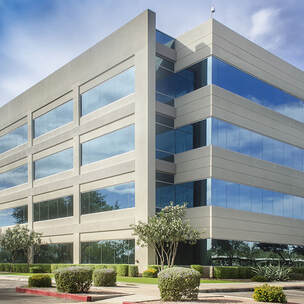 Commercial roofing experts can help you maintain a healthy roof with skylights Charlotte’s top commercial roofing experts can help you manage skylight issues. Skylights have become a popular architectural feature in commercial buildings due to their ability to bring natural light into interior spaces. They not only enhance aesthetics but also contribute to energy efficiency by reducing the need for artificial lighting. However, while skylights offer numerous benefits, they can also be a source of concern for commercial building owners and facility managers. In this article, we will explore the most frequent complaints about skylights on commercial roofs and discuss whether they pose a danger to the health of your roof. Common Complaints about Skylights on Commercial Roofs Leaking: One of the primary complaints associated with skylights is leaking. Skylights are essentially openings in the roof, and if not installed properly or maintained adequately, they can become a gateway for water infiltration during heavy rain or snowfall. Leaks not only damage the interior of the building but can also compromise the structural integrity of the roof itself. Heat Gain and Loss: While skylights allow natural light in, they can also result in unwanted heat gain during the summer and heat loss during the winter. Improperly designed or installed skylights can lead to increased energy consumption as the HVAC system struggles to maintain a comfortable indoor temperature.
Are Skylights Dangerous to the Health of Your Roof? The impact of skylights on the health of your commercial roof largely depends on their installation quality, maintenance, and the choice of materials. When properly installed and maintained, skylights can coexist with the roof without posing significant risks. Here are some key considerations:
Mitigating Skylight Issues To address the common complaints associated with skylights on commercial roofs, here are some strategies that building owners and facility managers can consider:
In conclusion, skylights on commercial roofs offer both aesthetic and functional benefits, but they can also be a source of complaints if not properly managed. By prioritizing quality installation, materials, and ongoing maintenance, building owners and facility managers can ensure that skylights not only bring in natural light but also contribute positively to the overall health and energy efficiency of the roof and the entire building. With the right strategies in place, skylights can continue to be an asset rather than a liability in commercial construction. Hire Charlotte’s top commercial roofing experts Steele Restoration is a fully licensed and insured Charlotte NC and Greenville SC-based general contractor and roofing company specializing in roofing, siding, and storm damage restoration for single-family homes, multi-family complexes, and commercial and industrial sites. We service Charlotte and surrounding areas, including Rock Hill, Lake Norman, Steele Creek, Matthews, Ballantyne, and Blakeney, along with the Greenville and Spartanburg SC areas. 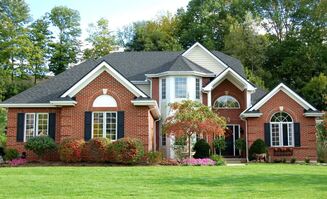 Residential roofing experts can help make sure your roof is in the best condition for the Winter ahead Charlotte’s best residential roofing contractors can help you keep your roof in the best condition in the Fall. As the leaves start to change color and the air turns crisp, it's a clear sign that fall has arrived. While you may be busy with seasonal activities like apple picking and pumpkin carving, it's also essential not to overlook an important aspect of homeownership – your roof. Fall is a critical time to ensure that your roof is in the best condition to withstand the upcoming winter months. In this article, we will discuss prudent maintenance practices to keep your roof in top shape during the fall season. Clean Your Gutters and Downspouts One of the most crucial tasks in fall roof maintenance is cleaning your gutters and downspouts. Leaves, twigs, and debris can accumulate in your gutters over the summer, potentially causing water to back up and damage your roof's structure. Ensure that gutters and downspouts are clear of debris to allow proper drainage of rainwater. This prevents water from seeping under shingles and causing leaks. Inspect Your Roof for Damage Fall is an ideal time to inspect your roof for any visible damage. Look for missing or damaged shingles, cracked flashing, or any signs of wear and tear. Binoculars can be handy for a closer examination without the need to climb onto your roof. If you notice any issues, it's best to address them promptly to prevent further damage. Trim Overhanging Branches Overhanging branches can pose a significant risk to your roof during fall and winter. Strong winds or heavy snow can cause branches to break and fall onto your roof, potentially causing severe damage. Trim back any branches that are too close to your home, and ensure that there are no branches directly above your roof. Clean Moss and Algae If you live in a humid climate, you may have noticed moss or algae growth on your roof. These can trap moisture and cause damage over time. To clean them, use a soft-bristle brush or a pressure washer on a low setting. Be gentle to avoid damaging the shingles. You can also consider applying a moss-resistant treatment to prevent future growth. Check Attic Insulation and Ventilation Proper attic insulation and ventilation play a vital role in maintaining your roof's condition. Insufficient insulation can lead to ice dams in the winter, while poor ventilation can trap moisture in your attic, causing rot and mold growth. Inspect your attic for adequate insulation and ensure that vents are clear and functioning correctly. Schedule a Professional Inspection While you can perform many roof maintenance tasks yourself, it's a wise idea to schedule a professional roof inspection, especially if your roof is older or if you're unsure about its condition. Roofing experts can identify hidden issues and provide recommendations for repairs or maintenance. Prepare for Winter As fall transitions into winter, it's a good time to prepare your roof for the colder months. Consider installing heating cables to prevent ice dams, and ensure that your attic is well insulated to keep you home warm and energy-efficient. Seal Roof Penetrations During the fall, it's a good idea to inspect and seal any roof penetrations such as vents, chimneys, and skylights. These areas are vulnerable to water intrusion if not properly sealed. Check for cracked or deteriorating sealant and replace it as needed. This extra layer of protection will help keep your roof watertight. Clean and Inspect Skylights If you have skylights on your roof, they require special attention. Clean the glass to allow maximum sunlight into your home during the shorter fall and winter days. Inspect the seals around the skylights for any signs of damage or leaks. Address any issues promptly to prevent water from entering your home. Remove Debris from Flat Roofs If your home has a flat or low-slope roof, it's important to clear off any debris like leaves, branches, or dirt that may have accumulated. Flat roofs are more susceptible to water pooling, and debris can exacerbate this issue. Ensure that drainage systems are working correctly to prevent water from standing on the roof's surface. Consider Roof Coating If your roof is older and showing signs of wear, consider applying a roof coating. Roof coatings can provide an extra layer of protection against the elements, prolonging the life of your roof. They can also improve energy efficiency by reflecting sunlight and reducing heat absorption. Plan for Professional Repairs If you discover any significant issues during your fall roof inspection, it's essential to plan for professional repairs. Roofing problems tend to worsen with time, so addressing them promptly can save you money and prevent more extensive damage in the long run. Contact a reputable roofing contractor to assess and fix any issues. Document Your Maintenance Keep a record of your fall roof maintenance activities. This documentation can be helpful for tracking the condition of your roof over time and can serve as a reference for future maintenance or when you decide to sell your home. Note any repairs made and their dates, as well as any recommendations from professional inspections. Fall is a crucial time to perform maintenance on your roof to ensure it remains in optimal condition. By following these prudent practices, you can protect your investment, extend the life of your roof, and prevent costly repairs. Remember that regular maintenance is key to a safe, comfortable, and energy-efficient home throughout the fall and winter seasons. Don't delay – start your fall roof maintenance today and enjoy peace of mind all year long. Work with Charlotte’s best residential roofing contractors Steele Restoration is a fully licensed and insured Charlotte NC and Greenville SC-based general contractor and roofing company specializing in roofing, siding, and storm damage restoration for single-family homes, multi-family complexes, and commercial and industrial sites. We service Charlotte and surrounding areas, including Rock Hill, Lake Norman, Steele Creek, Matthews, Ballantyne, and Blakeney, along with the Greenville and Spartanburg SC areas. 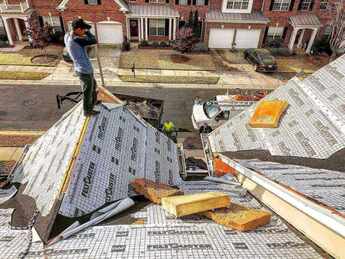 Roofer is well-versed in reroofing projects Charlotte’s top roofer can help you with your reroofing project. When it comes to maintaining the integrity and longevity of your home, one of the most critical aspects is the condition of your roof. Over time, roofs can deteriorate due to various factors like weather, age, and wear and tear. When this happens, a reroofing project becomes essential to ensure the safety and structural integrity of your house. In this article, we will delve into the complete process that goes into a reroofing project. Inspection and Assessment: The first step in any reroofing project is a thorough inspection and assessment of the existing roof. This involves examining the current condition of the shingles, underlayment, flashing, and the roof's overall structure. Roofing professionals will identify any damage, leaks, or areas that require repair or replacement. This assessment is crucial as it guides the rest of the project. Planning and Material Selection: Once the inspection is complete, the next step is to plan the reroofing project. This includes selecting the appropriate roofing materials, such as asphalt shingles, metal roofing, or tiles. Factors like climate, budget, and aesthetic preferences play a significant role in material selection. Roofing contractors will provide recommendations based on these factors. Removing the Old Roof: Before installing a new roof, the old roofing materials must be removed. This involves stripping away the existing shingles, underlayment, and any damaged or rotten wood. Removing the old roof down to the decking ensures a clean and stable surface for the new roof installation. Repairing or Replacing Decking: During the removal process, any damaged or rotted decking boards are identified and replaced. Ensuring a solid and stable foundation is crucial for the new roof's durability and longevity. Installation of Underlayment and Flashing: Once the decking is prepared, a waterproof underlayment is installed. This underlayment acts as a barrier against water infiltration and helps to protect the roof structure. Flashing, which is made of metal or another waterproof material, is also installed around roof penetrations such as chimneys, vents, and skylights to prevent leaks. Roofing Material Installation: With the underlayment and flashing in place, the roofing material selected earlier is installed. This step requires precision and attention to detail, as each shingle or tile must be correctly aligned and securely fastened to the roof. Proper installation ensures the roof's ability to shed water and withstand adverse weather conditions. Ventilation and Insulation (if necessary): In some cases, a reroofing project may involve improving the roof's ventilation and insulation. Proper ventilation helps regulate temperature and moisture within the attic space, while adequate insulation enhances energy efficiency. Final Inspection and Cleanup: Once the new roof is installed, a final inspection is conducted to ensure that all components are correctly in place, and there are no visible issues. After a successful inspection, the job site is thoroughly cleaned, and any debris from the old roof is removed. Maintenance and Warranty: After the reroofing project is completed, it's essential to follow a regular maintenance schedule to extend the life of your new roof. Many roofing materials come with warranties that cover defects and certain damages, providing peace of mind for homeowners. Consideration of Environmental Impact: In recent years, there has been a growing awareness of the environmental impact of construction projects, including re-roofing. Homeowners are increasingly looking for eco-friendly roofing options. Some roofing materials, such as metal roofing and certain types of shingles, are recyclable and can contribute to sustainability efforts. Additionally, cool roofing materials can help reduce energy consumption by reflecting more sunlight and absorbing less heat. Roofing Permits and Regulations: Before embarking on a re-roofing project, it's essential to check local building codes and regulations. Depending on your location, you may need permits and approvals from the local authorities. Roofing professionals are well-versed in these requirements and can help you navigate the permitting process. Roofing Budget and Financing: Reroofing can be a significant investment, and it's crucial to have a clear budget in mind. Obtain quotes from reputable roofing contractors, and make sure to include not only the cost of materials and labor but also any potential additional expenses for unforeseen repairs or upgrades. Some homeowners may explore financing options or insurance coverage for roof replacement. Roof Maintenance Tips: After your new roof is in place, it's essential to keep up with regular maintenance to extend its lifespan. This includes cleaning gutters, inspecting for loose or damaged shingles, and addressing any minor issues promptly. Regular maintenance can prevent small problems from becoming significant, costly repairs. Long-Term Benefits of Reroofing: Investing in a reroofing project offers several long-term benefits. These include improved energy efficiency, increased property value, enhanced curb appeal, and peace of mind knowing that your home is protected from the elements. Additionally, a new roof can often come with a warranty that covers material defects or workmanship issues, providing added assurance. Hiring a Professional Roofing Contractor: Undoubtedly, one of the most crucial aspects of a successful reroofing project is hiring a reputable and experienced roofing contractor. Look for contractors with a proven track record, proper licensing and insurance, and positive customer reviews. They should also provide clear, written contracts detailing the scope of work, materials used, and project timelines. In conclusion, a reroofing project is a complex undertaking that involves careful planning, quality materials, skilled labor, and attention to detail. By following the complete process outlined in this article and considering environmental factors, regulations, and long-term benefits, homeowners can ensure a successful and durable roof replacement. Remember that your roof is a vital component of your home's structure, and investing in its maintenance and replacement is an investment in the safety, comfort, and value of your property. Work with Charlotte’s top roofer Steele Restoration is a fully licensed and insured Charlotte NC and Greenville SC-based general contractor and roofing company specializing in roofing, siding, and storm damage restoration for single-family homes, multi-family complexes, and commercial and industrial sites. We service Charlotte and surrounding areas, including Rock Hill, Lake Norman, Steele Creek, Matthews, Ballantyne, and Blakeney, along with the Greenville and Spartanburg SC areas. 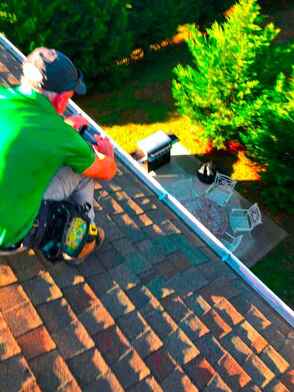 Roof repair experts can help you correctly hack roof replacement projects Charlotte’s top roof repair experts can guide you through roof replacement projects by discussing project timelines. An expert can also help you enjoy amazing results for your roofing replacement project. Roof replacement is a substantial home improvement endeavor that involves the intricate interplay of several stages to ensure the installation of a durable, weather-resistant, and aesthetically pleasing roof. Each phase is essential for the overall success of the project, and roofing specialists are instrumental in navigating these steps with precision and expertise. A roof replacement project involves the removal of an existing roof and the installation of a new one. This process is undertaken to address issues such as aging, leaks, and damage from weather events, or simply to update the aesthetic and value of a home. A typical roof replacement project is a multi-step process that includes assessment, preparation, installation, and cleanup. Here’s the detailed process and an explanation of what each step involves: Initial Assessment The commencement of a roof replacement project begins with a meticulous assessment of the existing roof. Experienced roofing specialists conduct a thorough examination to identify potential issues that could affect the new roof's longevity and performance. This includes identifying areas of damage, water infiltration, deteriorated decking, and ventilation problems. The assessment helps formulate a comprehensive plan for addressing underlying concerns and creating a solid foundation for the upcoming installation. Material Selection The choice of roofing material is a critical decision that homeowners make in collaboration with roofing specialists. The material selection process considers numerous factors, including the region's climate, the home's architectural style, personal aesthetic preferences, and budget constraints. Options range from traditional asphalt shingles to durable metal roofing or elegant slate tiles. Each material offers distinct advantages in terms of longevity, insulation, and visual appeal, allowing homeowners to align their choices with their unique needs and aspirations. Planning and Scheduling Efficient planning and scheduling are paramount for the successful execution of a roof replacement project. Roofing specialists meticulously consider various elements, with weather conditions being of utmost importance. Scheduling the project during a period of dry and moderate weather helps ensure the installation process is smooth and unhindered. This consideration prevents weather-related setbacks and ensures that the roofing materials can be properly adhered and sealed. Additionally, coordinating the project timeline with the homeowner's availability and any necessary permits contributes to a seamless experience. Preparing the Site Before the new roof installation begins, the roofing team prepares the site by removing the existing roof materials. This involves a careful teardown process, which includes disposing of old shingles, underlayment, and any damaged decking. By starting with a clean slate, the roofing specialists create an optimal foundation for the new roof. This step also allows for a thorough inspection of the underlying structure, enabling any necessary repairs to be made before the installation of the new roofing materials. Installation The installation phase involves meticulous attention to detail and adherence to industry best practices. Depending on the chosen roofing material, roofing specialists meticulously follow specific installation procedures. For instance, asphalt shingles require the installation of underlayment, followed by the careful placement of shingles in an overlapping pattern to ensure effective water drainage. Metal roofing installations involve securing large panels with precision, considering expansion and contraction due to temperature fluctuations. Regardless of the material, precise installation techniques are employed to guarantee the roof's longevity and resilience. Quality Checks Throughout the installation process, roofing specialists conduct regular quality checks to ensure that each step meets stringent standards. These checks encompass verifying proper alignment of roofing materials, accurate installation of flashing around vulnerable areas like chimneys and vents, and ensuring adequate ventilation for optimal airflow. Attention to detail during quality checks is crucial to identifying and rectifying any potential issues before they compromise the roof's performance or structural integrity. Cleanup and Inspection Upon completing the installation, the roofing team undertakes a thorough cleanup of the project site. This involves removing debris generated during the installation process, such as old roofing materials, nails, and packaging. A meticulous inspection follows, encompassing a comprehensive assessment of the newly installed roof. Roofing specialists examine the integrity of the installation, ensuring that all components are secure, aligned, and properly sealed. Inspection requirements may vary according to state laws and neighborhood, so check with your contractor and local HOA to avoid conflicting situations. This step is vital to verifying that the roof is prepared to withstand various weather conditions and deliver optimal protection. Final Steps As the project nears its conclusion, roofing specialists finalize paperwork, including any warranties on materials and workmanship. These warranties offer homeowners peace of mind, knowing that their investment is protected against defects and installation errors. Additionally, roofing professionals ensure that the homeowner is satisfied with the completed project and address any questions or concerns. This final interaction underscores the dedication of roofing specialists to delivering not only a functional roof but also a positive and collaborative experience for the homeowner. A comprehensive understanding of the stages involved in a roof replacement project reveals the intricate process that transforms a vulnerable or aging roof into a resilient and aesthetically pleasing structure. The partnership between homeowners and roofing specialists, combined with meticulous planning, skillful execution, and rigorous quality control, results in a successful roof replacement that enhances a home's durability, energy efficiency, and curb appeal. Work with Charlotte’s top roof repair experts Steele Restoration is a fully licensed and insured Charlotte NC and Greenville SC-based general contractor and roofing company specializing in roofing, siding, and storm damage restoration for single-family homes, multi-family complexes, and commercial and industrial sites. We service Charlotte and surrounding areas, including Rock Hill, Lake Norman, Steele Creek, Matthews, Ballantyne, and Blakeney, along with the Greenville and Spartanburg SC areas. 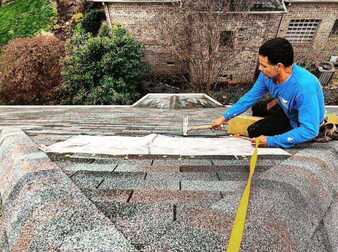 Property insurance claims and adjusters can help you avoid losses against unexpected damages Property insurance claims and adjusters can help get reimbursed against unexpected damages or losses. Whether you own a home, a business, or other valuable property, having a comprehensive property insurance policy is essential for peace of mind. However, navigating the world of property insurance claims can be complex, especially when faced with a variety of technical terms and concepts. In this article, we'll break down some of the common terminologies used in property insurance claims and the role of adjusters in the process. Property Insurance Claims: Property insurance claims are requests made by policyholders to their insurance company to compensate for damages or losses to insured properties. These damages can be the result of various events, including natural disasters, accidents, theft, vandalism, and more. When filing a property insurance claim, it's important to understand the key terminologies involved in the process. Policyholder: The policyholder is the individual or entity that owns the insurance policy. They are the party that purchases the insurance coverage and is entitled to file claims when covered events occur. The policyholder's responsibilities include paying premiums and adhering to the terms and conditions outlined in the insurance policy. Premium: A premium is the amount of money paid by the policyholder to the insurance company in exchange for coverage. Premiums can be paid annually, semi-annually, quarterly, or monthly, depending on the terms of the insurance policy. The premium amount is determined based on factors such as the value of the insured property, the level of coverage, and the policyholder's risk profile. Deductible: A deductible is the initial amount of money that the policyholder is required to pay out of pocket before the insurance coverage kicks in. For example, if a policy has a $1,000 deductible and the insured property sustains $5,000 in damages, the policyholder must pay $1,000, and the insurance company will cover the remaining $4,000. Adjuster: An adjuster, also known as a claims adjuster, is a professional employed by the insurance company to assess the extent of damages, verify the validity of a claim, and determine the amount of compensation to be paid to the policyholder. Adjusters play a vital role in the claims process by conducting thorough investigations and ensuring that claims are handled fairly and in accordance with the policy terms. Actual Cash Value (ACV): ACV is the value assigned to a damaged or lost property at the time of the loss, taking into account factors such as depreciation. It is calculated by subtracting the property's depreciation from its replacement cost. The compensation paid to the policyholder is based on the ACV of the property, considering its age, condition, and market value. Replacement Cost: Replacement cost refers to the actual cost of repairing or replacing the damaged or lost property without accounting for depreciation. If the policy includes replacement cost coverage, the insurance company will reimburse the policyholder for the full cost of repair or replacement, up to the policy's limits, without factoring in depreciation. Subrogation: Subrogation is the legal right of the insurance company to pursue a claim against a third party who may have caused or contributed to the loss. If the insurance company pays a claim to the policyholder, it may seek reimbursement from the responsible party to recover the funds paid out. Loss of Use: Loss of use coverage provides compensation to the policyholder for additional living expenses incurred when the insured property becomes uninhabitable due to a covered event. This coverage helps the policyholder maintain their standard of living while their property is being repaired or replaced. Loss Assessment: Loss assessment coverage is often associated with condominium or homeowners’ association (HOA) insurance. In the event that a common area of a condominium complex or community is damaged, the HOA might levy assessments on individual unit owners to cover repair costs. Loss assessment coverage helps protect individual unit owners from unexpected financial burdens resulting from such assessments. Proof of Loss: Proof of loss is a formal document submitted by the policyholder to the insurance company. It outlines the details of the claim, including the nature and extent of the damages, the cause of the loss, and the estimated cost of repairs or replacement. Providing complete and accurate proof of loss is crucial for a smooth claims process. Exclusion: Exclusions are specific events, circumstances, or types of damage that are not covered by the insurance policy. It's important for policyholders to carefully review the policy's exclusions to understand what types of losses are not eligible for compensation. Common exclusions might include damages resulting from intentional acts, wear and tear, or certain types of natural disasters. Appraisal: If there is a dispute between the policyholder and the insurance company regarding the value of damages or the amount of compensation, an appraisal process may be initiated. Appraisal involves obtaining independent assessments of the damages and their costs. The appraisers' findings are used to determine a fair settlement for the claim. Salvage: Salvage refers to damaged property that still retains some value and can be sold. After a claim has been settled, the insurance company may take possession of the salvage property to recover a portion of the paid claim amount. This process helps offset the insurer's costs and reduce losses. Waiver of Subrogation: A waiver of subrogation is a contractual agreement that prevents the insurance company from seeking reimbursement from a third party even if that party is responsible for the loss. This provision is often included in contracts to protect the interests of multiple parties involved. Hire Charlotte’s best property insurance claims and adjusters Steele Restoration is a fully licensed and insured Charlotte NC and Greenville SC-based general contractor and roofing company specializing in roofing, siding, and storm damage restoration for single-family homes, multi-family complexes, and commercial and industrial sites. We service Charlotte and surrounding areas, including Rock Hill, Lake Norman, Steele Creek, Matthews, Ballantyne, and Blakeney, along with the Greenville and Spartanburg SC areas. |
AuthorWrite something about yourself. No need to be fancy, just an overview. Archives
November 2023
CategoriesAll Affordable Roofing Best Commercial Roofing Best Greenville Roofing Company Best Quality Roofing Best Residential Roofing Company Best Roofers Best Roofing Company Best Roofing Services Best Storm Damage Roof Repair Charlotte Charlotte NC Commercial Roofer Commercial Roofing Commercial Roofing Company Concord NC Greenville NC Greenville SC Gutter Installation Gutter Replacement Gutters Insurance Restoration NC Property Insurance Claim Property Insurance Claims Property Insurance Claims And Adjusters Property Insurance Claims And Adjustors Quality Roofing Residential Roofing Residential Roofing Company Residential Roofing Contractors Residential Roofing Services Residential Roof Repair Roof Contractor Roofer Roofer Contractor Roofer Contractors Roofers Roofing Company Roofing Contractor Roof Leak Repair Roof Repair Roof Repair Contractors Siding Installation Storm Damage Repair Storm Damage Restoration Storm Damage Restoration Company Storm Damage Roof Repair Top Affordable Roofing Top Commercial Greenville Roofing Company Top-rated Residential Roofing Expert Top Residential Roofing Company Top Roofer Contractor Top Roofers Top Roofing Contractor Top Roof Repair |
 RSS Feed
RSS Feed
